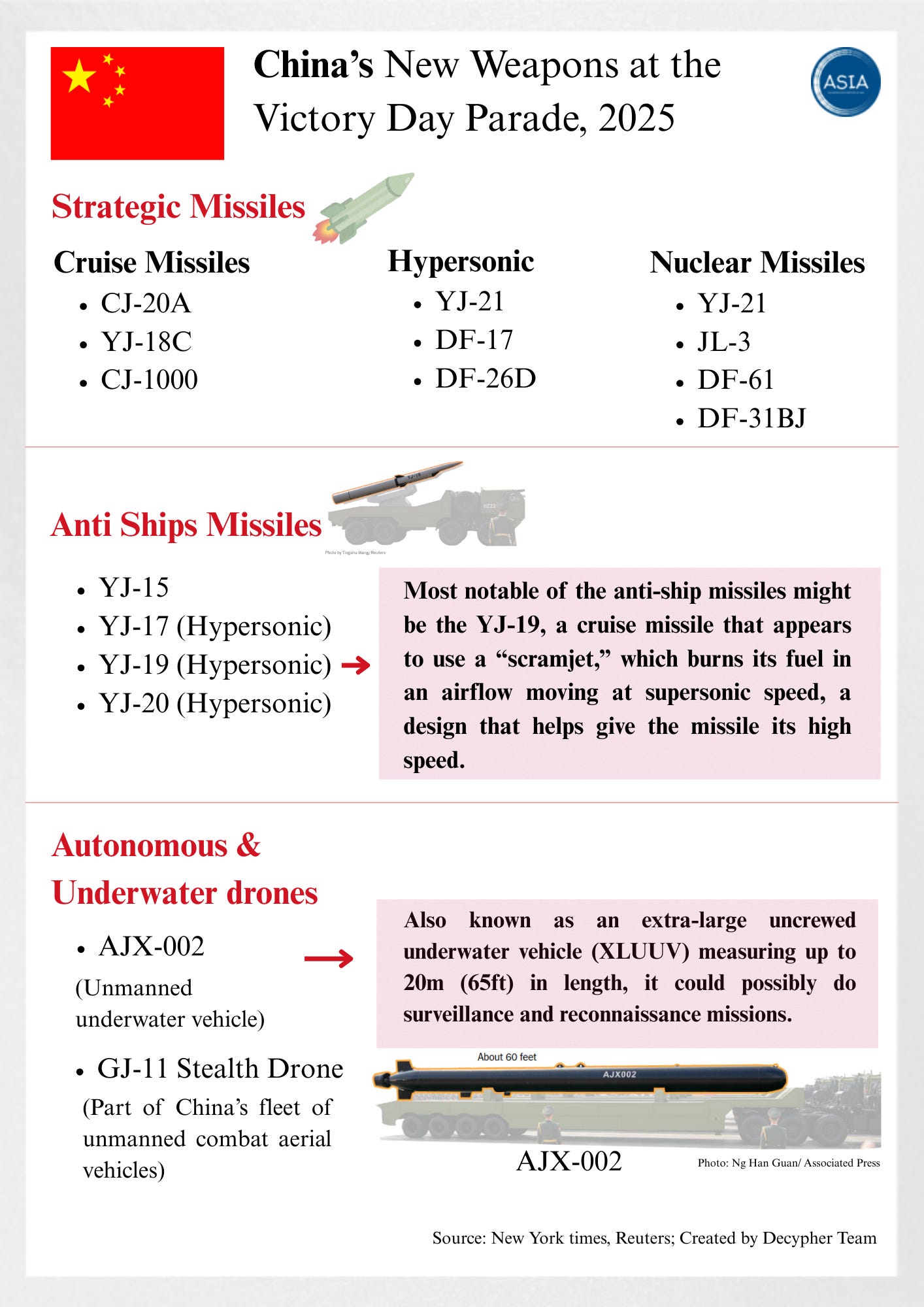China This Week: New Lasers, AI Drones & Missiles Unveiled, SCO Summit Ties Deepen, US Missile in Japan Angers China
This week in China, we explore key shifts in its domestic and foreign policy landscape as well as a closer look at China's show of force at their military parade.
China Quote 🗩
"Today humanity is again faced with the choice of peace or war, dialogue or confrontation, win-win or zero sum."
Xi Jinping, President of China
China’s Power Parade
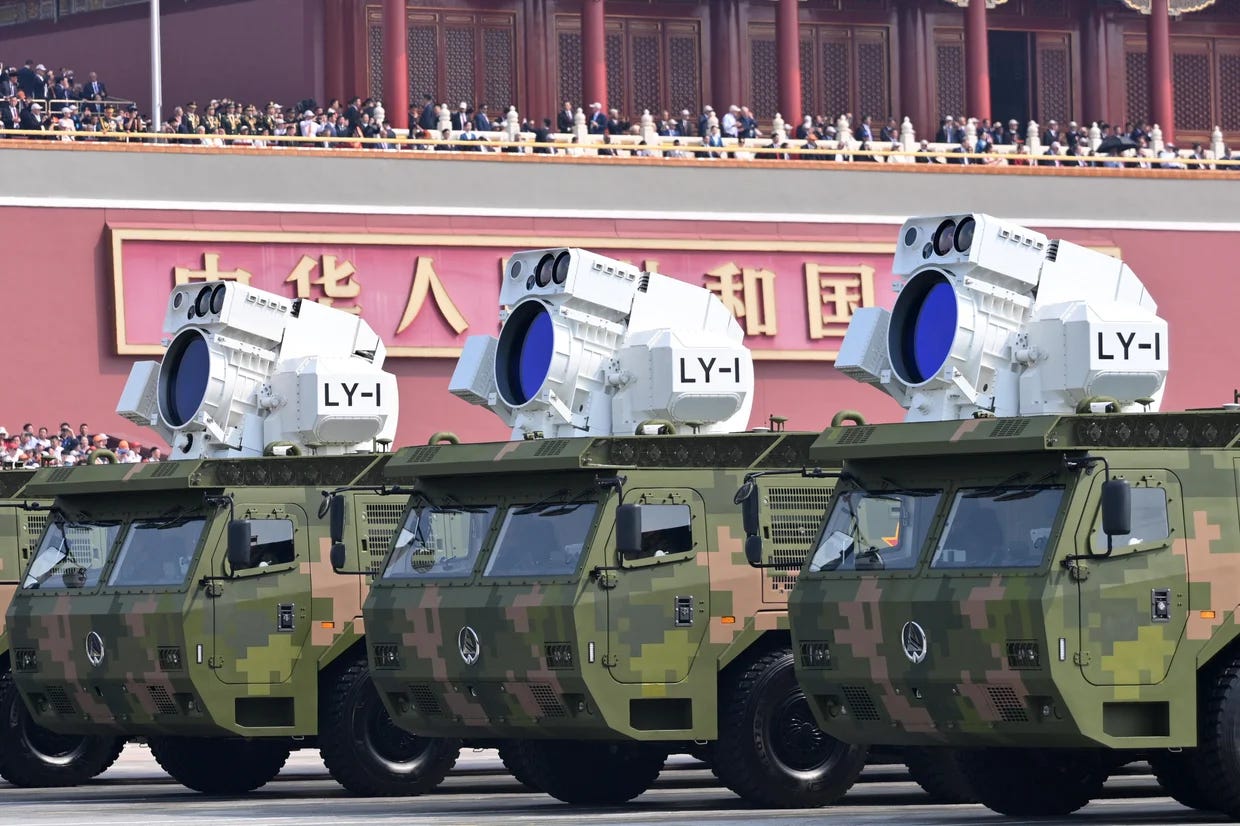
China held its once in a decade military parade to mark the end of the Second World War. The parade was less about the commemoration and more about demonstrating how far the People’s Liberation Army (PLA) has come and how far it intends to go. The parade showed how the military has modernised across different domains of land, sea, air and energy. Under Xi Jinping, the display has grown into a carefully orchestrated message, directed outward to rivals and inward to reassure its citizens of national strength and security.
At the centre of the parade was a new variant of the intercontinental ballistic missile, the DF-5C. The sheer size and the presence of the missile emphasised the significant volume of its payload and additional countermeasures. Alongside the DF-5C was the debut of the DF-61, which aims to experiment with a fractional orbital bombardment system with an ability to circle the globe to strike a target. The JL-3 completes the nuclear mechanism trinity. JL-3 is the latest generation submarine-launched ballistic missile allowing China to strike on distant targets, including the United States, from far beyond its borders. Together the three systems show that China’s nuclear arsenal is modernising, diversifying and securing themselves against early actions.
In a first for such an event, the parade also highlighted weapons intended for maritime control. The YJ-21 or the “carrier killer” is used against high-value naval targets and has already been put into use and launched from a PLA Navy destroyer and carried by H-6 bombers. The YJ-17, a new anti-ship entrant, is capable of travelling at hypersonic speeds, sending shockwaves to extend its range. This could potentially threaten the United States’ carrier groups, even those outside China’s coastal waters. Defence systems against imminent attacks were also shown during the parade. The HQ-29 interceptor can intercept enemy missiles while still in space and alongside it the LY-1 truck is a cost-effective future for countering drones and other low-end aerial threats. Other weapons on display were the underwater and surface domains. The unmanned AJX002 submarine also made its debut which will be used for surveillance and intelligence gathering. A new small, hard-to-detect stealth combat ship, also points towards maritime control and experimentation.
The most theatrical yet striking display was the troop of robot dogs galloping alongside the hardware. These robot dogs embody China’s vision of ‘intelligentized warfare’ and as a practical option for different battlefield roles, from conducting intelligence and surveillance to even carrying cargo to the place of combat.
Beyond the spectacle, the parade cannot be isolated from the wider context of geopolitical struggles. The United States and its allies are likely to interpret these advances as part of a strategic challenge, one where through the showcase of these weapons, China can match and even surpass Western military technologies and expects to be treated as an equal. At the same time, China’s intentions remain open to debate. The parade could be read as a demonstration of dominance or as a defensive signal to ensure that China cannot be coerced or threatened. A more careful interpretation is that this parade reflects both instincts simultaneously, an effort to defend national security while also demonstrating the ability to constrain opposing forces. The parade highlights China’s ambition and desires to keep opposing forces uncertain about its trajectory and future.
Altogether, the weapons in the parade show China’s determination to modernise its military across multiple domains. Each defence mechanism provides a distinct utility, such as efficiency, reach and disruption. This parade was not merely to mark its past wars but to show the world how prepared it is for future ones, and to send a message to its adversaries that China is prepared to deter and dominate on its own terms.
Economic Activity🏦
China’s CSI 300 Outpaces Global Markets as Locals Pile In
FT reports that China’s CSI 300 index has gained 14.3% this year, outpacing US, European and Japanese benchmarks, as domestic investors pour into equities despite foreign funds largely staying away. Low bond yields, weak property markets and abundant liquidity have driven households and institutions into A-shares, with margin trading rising 19% in two months to Rmb2.2 trillion. Analysts caution that deflationary pressures still threaten earnings, but note Beijing’s looser monetary policy and state-backed share buying have underpinned the rally.
Shaoxing Offers Dining Subsidies to Boost Consumption
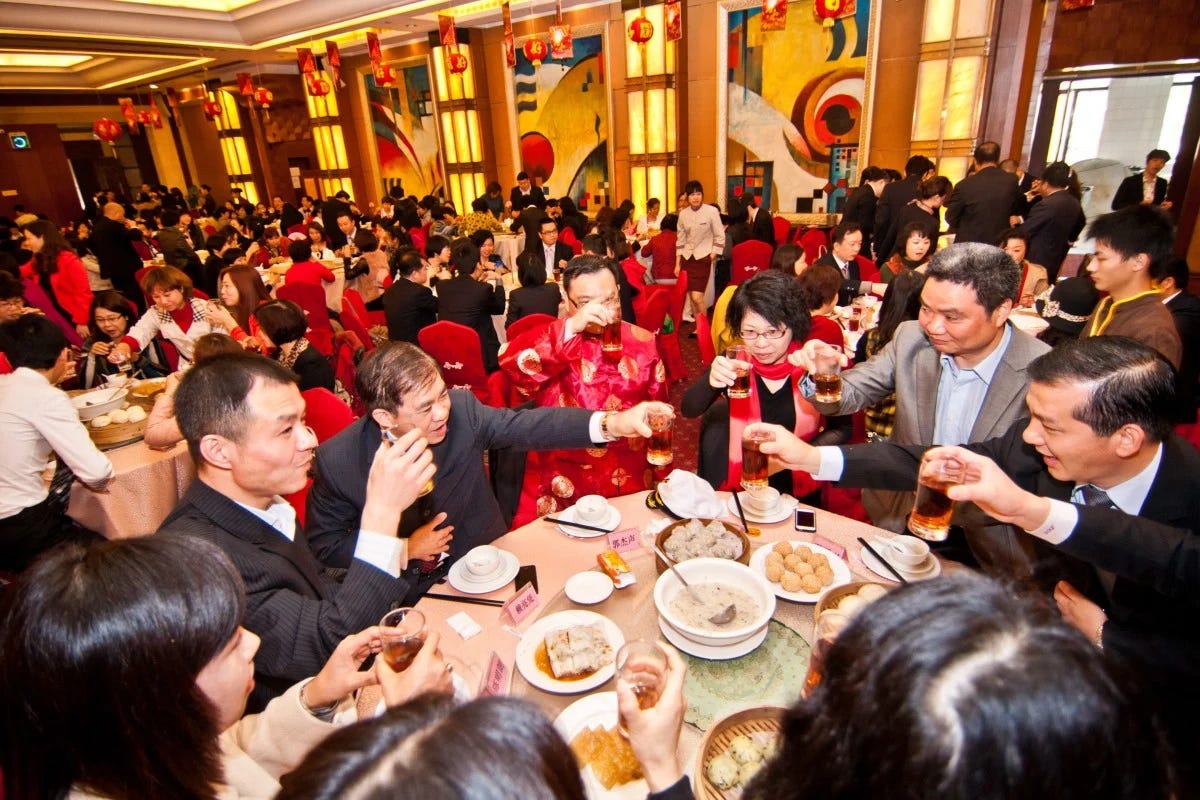
SCMP reports that Shaoxing, Zhejiang, will subsidise restaurant banquets with payouts of up to 5,000 yuan (US$700) for hosts who book five or more tables and spend over 10,000 yuan, aiming to spur local consumption amid slowing growth. The city expects the policy to inject 178 million yuan into the economy this year. However, the plan comes just as Xi Jinping has reiterated austerity rules against lavish banquets, creating tension between growth targets and discipline drives. Shaoxing will also issue nearly 100 million yuan in consumer vouchers across sectors like childcare, healthcare, and tourism.
Hong Kong Probes Insider Trading at HKEX and SFC
The Standard reports that Hong Kong authorities are investigating insider trading allegations involving employees of Hong Kong Exchanges and Clearing (HKEX) and the Securities and Futures Commission (SFC), along with brokers and social media influencers. The probe centers on whether confidential information about pending corporate announcements, including privatisations, was leaked to traders over several years. The inquiry has been ongoing for months, though such cases can take years and may not necessarily result in charges.
US Revokes TSMC’s License on China-Bound Tech
BBC reports that Washington has revoked Taiwan Semiconductor Manufacturing Company’s (TSMC) authorisation to export advanced technology from the US to China. The move follows similar restrictions on Samsung and SK Hynix, complicating shipments for their Chinese factories. TSMC said it is in talks with the US government but stressed that its Nanjing facility only produces older-generation chips, limiting the impact on overall revenue. Analysts warn, however, that the restrictions could drive Chinese firms to accelerate domestic innovation with existing equipment.
China Builds ‘Land-Based Suez Canal’ via Chongqing to Bypass Sea Routes
Euronews reports that Chongqing has become the hub of a new overland trade corridor connecting Southeast Asia to Europe, billed as a “land-based Suez Canal.” Daily freight trains now link Vietnam and Singapore to Germany and Poland up to 20 days faster than sea routes, aided by the ASEAN bullet train that cut Hanoi–Chongqing transit to five days. Beyond logistics, analysts see geopolitical aims: Beijing wants alternatives to sea lanes under U.S. influence, pushing a “Middle Corridor” via Kazakhstan and the Caspian to reduce reliance on Russia and maritime chokepoints. Challenges remain, including high costs, customs delays, and dependence on subsidies.
Trump’s tariffs push Brazil and India exporters closer to China
BBC reports that sweeping US tariffs, including a 50% levy on Brazilian coffee and Indian goods like tea and seafood, are driving exporters to seek new buyers in China and Europe. Over 180 Brazilian coffee firms registered to export to China in July, while Luckin Coffee has already signed a billion-dollar deal with Brazilian producers. Indian exporters of tea and prawns are also pivoting towards China, their second-largest market, as US buyers pause orders. Analysts warn that American consumers could see higher prices, with coffee alone expected to rise up to 7% per cup.
Anthropic to block AI services for Chinese-owned groups
Financial Times reports that AI firm Anthropic will stop selling its services to companies majority-owned by Chinese entities, as well as to Russia, Iran and North Korea. The move aims to prevent Beijing from using advanced AI for military purposes, with potential impacts on firms like ByteDance, Alibaba and Tencent. The policy comes amid US concerns over Chinese access to frontier AI through overseas subsidiaries and follows rising scrutiny after Chinese start-up DeepSeek was accused of misusing foreign models.
Inside China🐉
China Unveils Lasers, AI Drones, and New Missiles at Military Parade
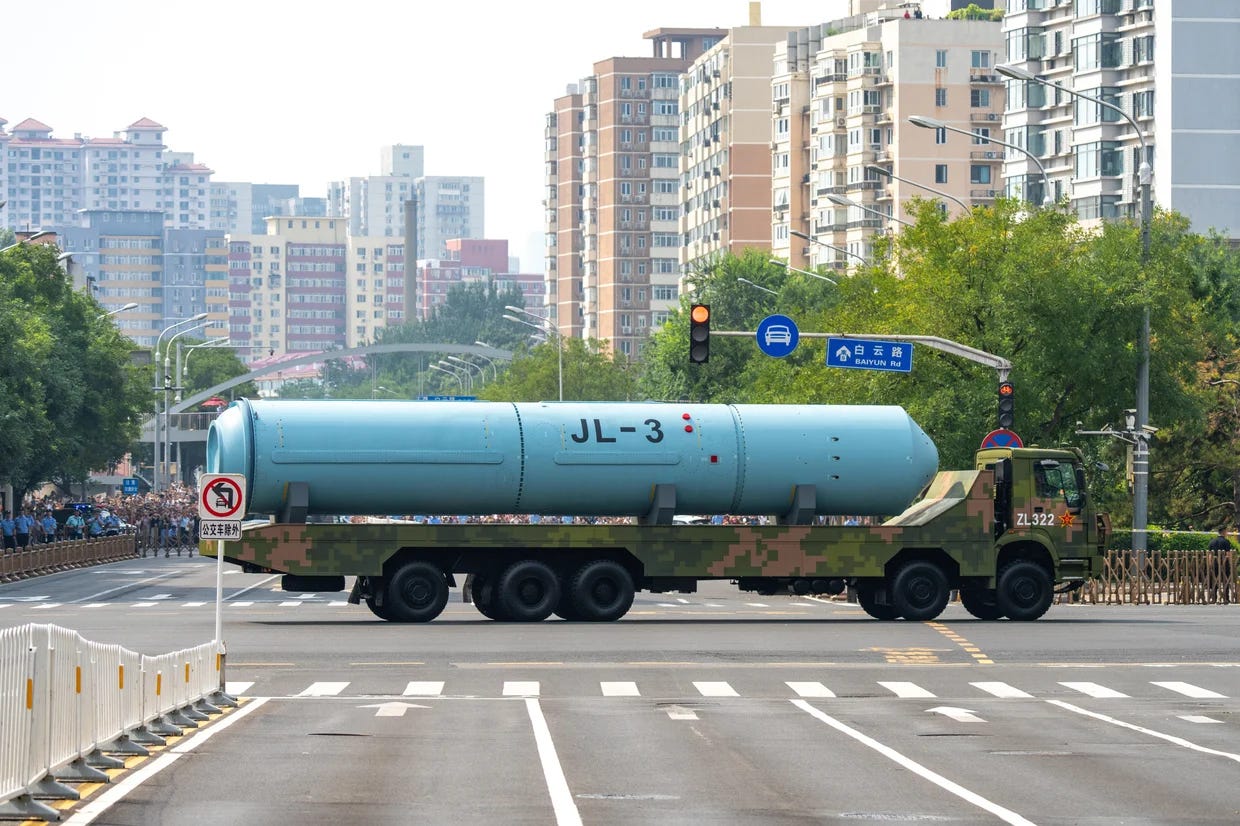
CBS News reports that Beijing staged a massive parade showcasing its latest military hardware before Xi Jinping, Vladimir Putin and Kim Jong Un. New systems included the LY-1 laser weapon, AI-powered drones, a 65-foot submarine drone, and four-legged “robotic wolves.” China also unveiled the DF-5C intercontinental missile, capable of carrying up to 12 warheads, along with the DF-61 and JL-3 submarine-launched missile. Analysts said the display reflects China’s push to integrate AI and unmanned systems into warfare, though critics argue its rigid command structure limits battlefield agility compared with the U.S.
China and the World🌏
China Gains From Trump’s Alienation of India
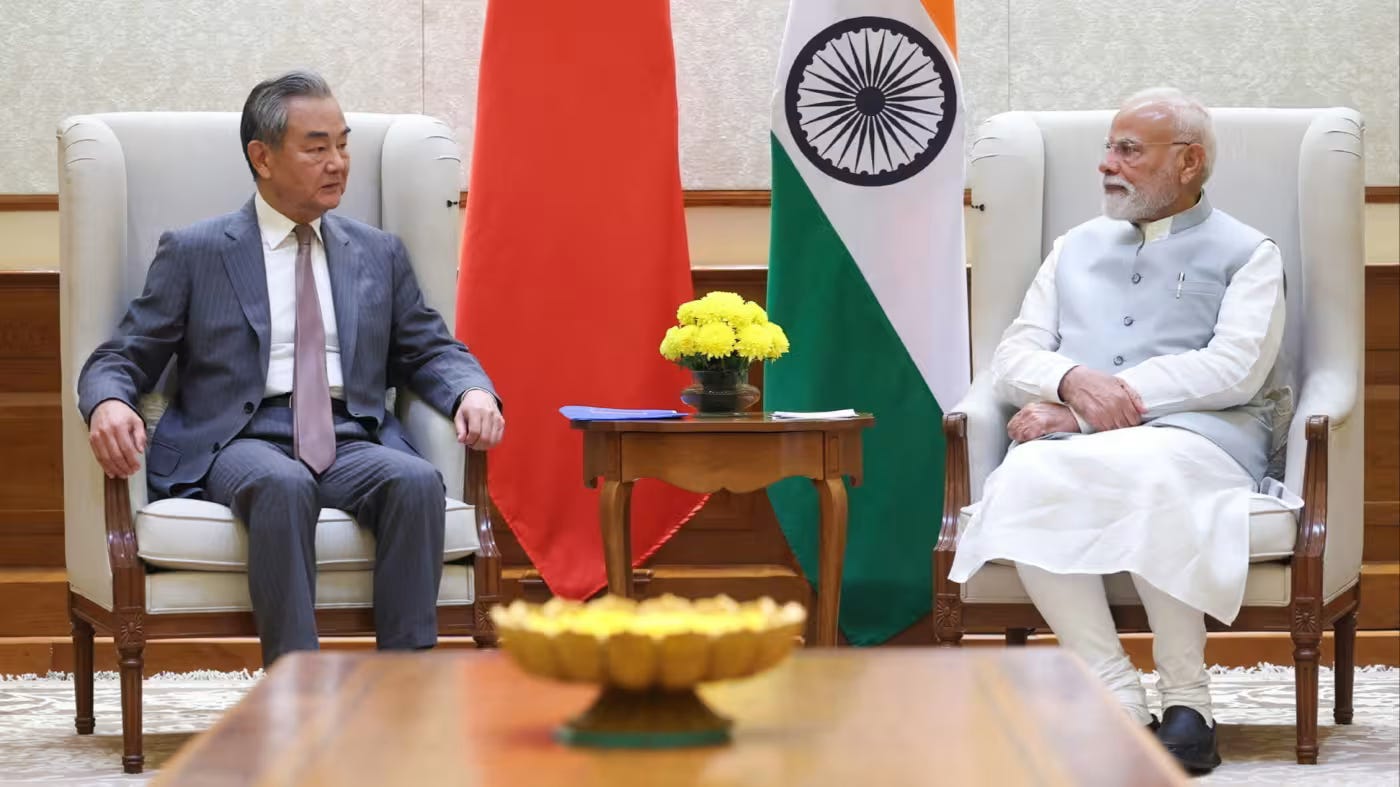
Financial Times notes that Donald Trump’s tariff barrage on India and warming ties with Pakistan are undermining Washington’s long-standing effort to cultivate New Delhi as a counterweight to Beijing. Days after the US imposed 50% tariffs on Indian imports, Prime Minister Narendra Modi will visit China for the first time in seven years, joining Xi Jinping and Vladimir Putin at the Shanghai Cooperation Organisation summit in Tianjin. The editorial warns that America’s unpredictability risks pushing India and China closer together, even as security tensions on their Himalayan border remain unresolved and India clings to the Quad grouping with the US, Japan and Australia.
Putin and Xi Seal Gas Deal, Hail ‘Unprecedented’ Ties at SCO Summit
CNN reports that Vladimir Putin and Xi Jinping deepened their partnership at the Shanghai Cooperation Organisation summit in Tianjin, with Russia’s Gazprom announcing a legally binding agreement for the long-delayed Power of Siberia-2 pipeline. The $multi-billion project will send 50 bcm of gas annually to China for 30 years, replacing part of Russia’s lost European market. Putin hailed relations as “unprecedentedly high,” while Xi called him an “old friend.” China has yet to confirm the deal, reflecting caution about over-reliance on Russian energy.
Trump Accuses Xi, Putin and Kim of ‘Conspiring Against’ US at Beijing Parade
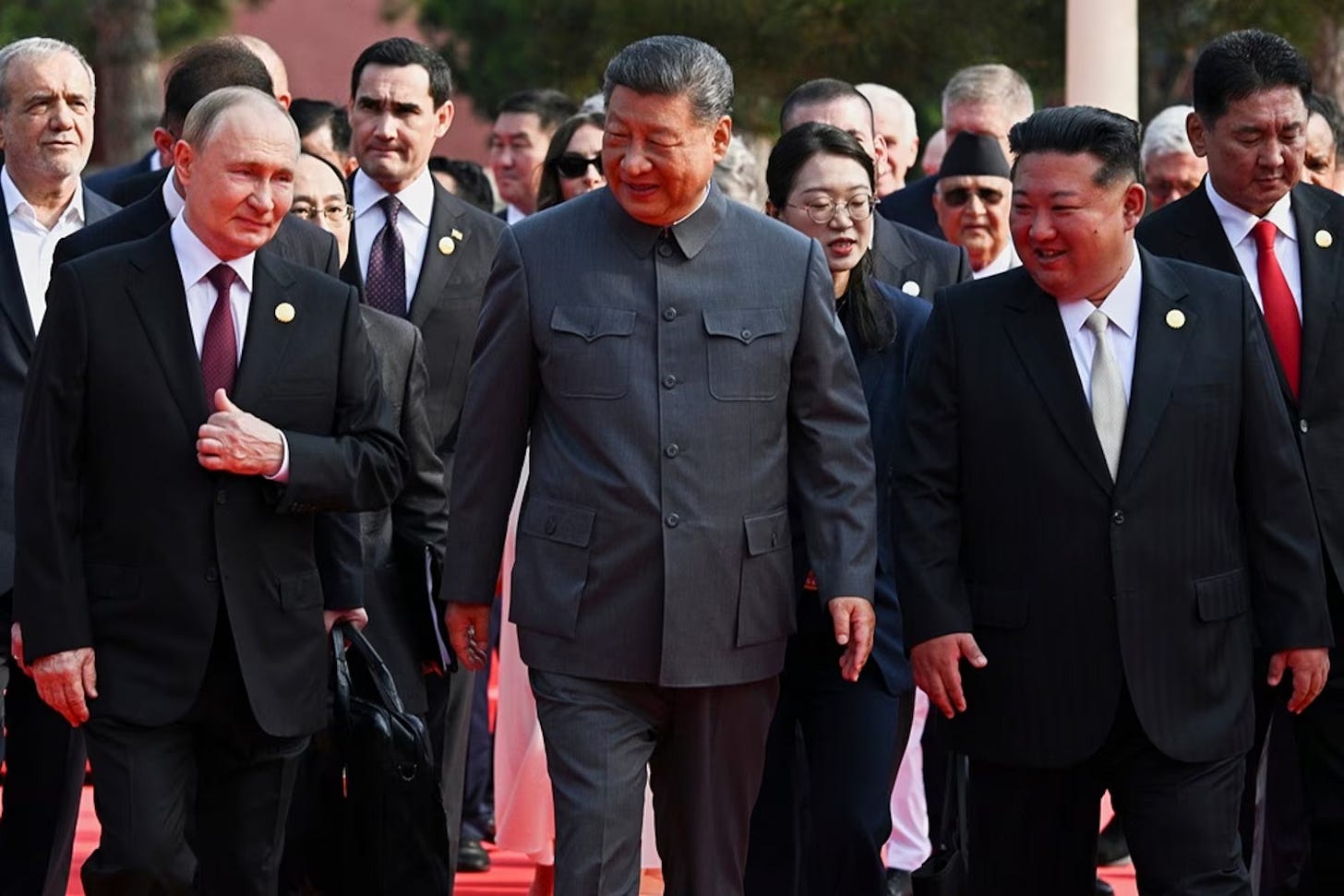
ABC News reports that Donald Trump accused Xi Jinping, Vladimir Putin and Kim Jong Un of “conspiring against the United States” as they attended China’s largest-ever military parade in Beijing. The event, marking the 80th anniversary of Japan’s surrender, showcased new PLA weaponry. Xi hailed China’s “heroic force,” while Putin and Kim highlighted solidarity against Western pressure. The Kremlin dismissed Trump’s remarks, insisting no “conspiracies” were planned. The parade came amid Western concerns over China’s economic support for Moscow and North Korea’s supply of troops and ammunition to Russia.
Xi Jinping Reaffirms Strategic Ties With Kim Jong-un
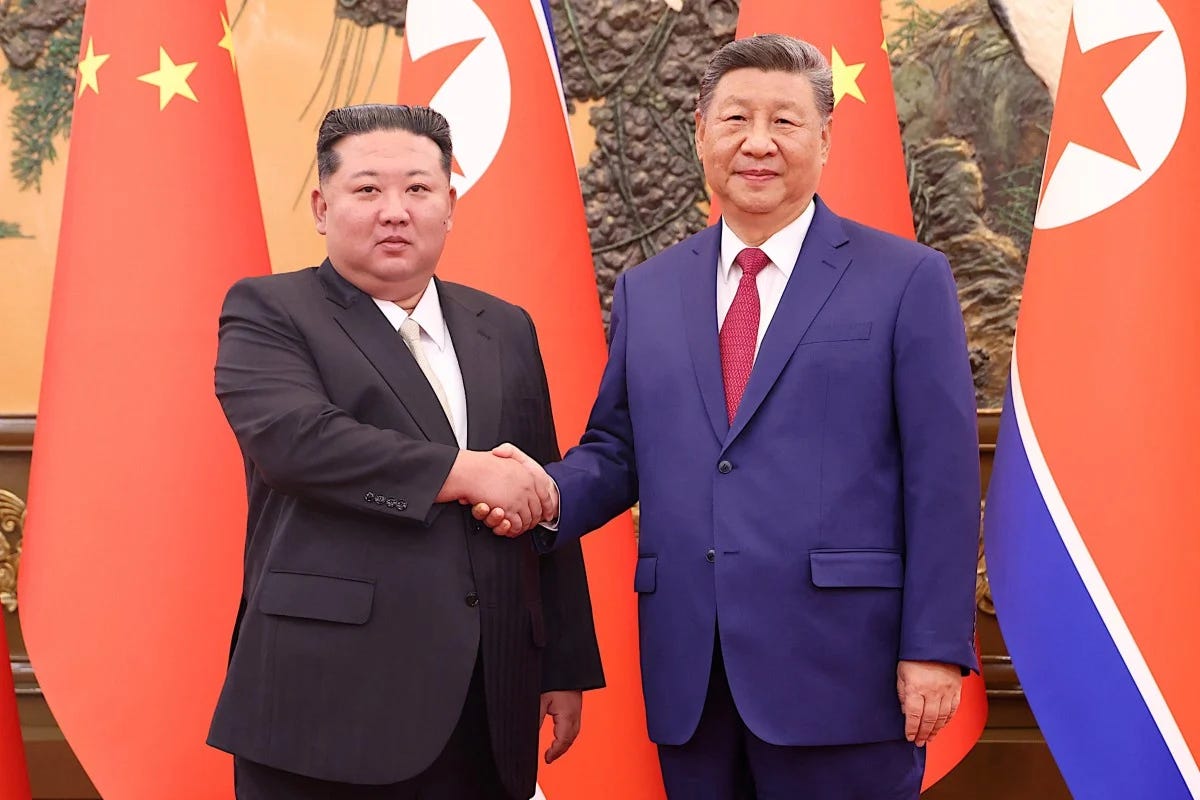
SCMP reports that Xi Jinping hosted Kim Jong-un in Beijing for their first talks in six years, pledging that China’s support for North Korea would remain unchanged “regardless of how the international situation evolves.” Xi emphasized strengthening high-level exchanges, party-to-party ties, and practical cooperation, underscoring Beijing’s role as Pyongyang’s enduring partner even amid closer Russia–North Korea alignment. Kim praised China’s “impartial position” on the peninsula and vowed deeper coordination in multilateral forums. The meeting came a day after Kim appeared with Xi and Vladimir Putin at Beijing’s Victory Day military parade, a striking show of anti-Western unity.
First Chinese Delegation in 7 Years to Visit European Parliament
Politico reports that Chinese lawmakers will visit the European Parliament later this year, the first such trip since 2018. Meetings are expected in October or November, followed by an EU delegation to China in May 2026. Talks will cover Russia’s war in Ukraine, trade imbalances, the UN’s role in global governance and human rights. The visit was made possible after both sides lifted sanctions in April 2025, ending a freeze triggered by Beijing’s blacklisting of MEPs in 2021. MEP Engin Eroglu said Europe must reduce its “massive trade deficit” with China but acknowledged it was “unrealistic” to expect Beijing to shift its position on the war.
‘Unrestrained’ Chinese Cyberattack May Have Stolen Data From Almost Every American
The New York Times reports that a Chinese state-sponsored hacking group known as Salt Typhoon infiltrated telecoms and infrastructure networks across 80 countries, in what investigators call Beijing’s most ambitious cyberattack yet. U.S. and allied officials warned the campaign may have compromised the personal data of nearly every American, including President Trump during his campaign last year. A joint statement by the U.S., U.K., Canada, Japan and others described the operation as “unrestrained” and “indiscriminate,” raising fears that stolen data could be used to track politicians, spies and activists worldwide.
Taiwan accuses China of illegal drilling in its waters
The Guardian reports that Taiwan has accused China of breaching international law by operating oil rigs inside its exclusive economic zone near the disputed Pratas Islands. Taipei demanded Beijing halt what it called “illegal deployment and exploitation activities,” warning they undermined stability in the region. A US think tank revealed Chinese state-run rigs had been present for up to five years, highlighting Beijing’s strategy of “sovereignty shaving.” Analysts noted Taiwan’s limited legal and maritime tools to respond, but urged closer coordination with regional partners like Japan and Vietnam, who have made similar protests.
US Deploys New Strike Missile to Japan, Angering China and Russia
Business Insider reports that the US Army will deploy its truck-mounted Typhon mid-range missile system to Japan this month during Exercise Resolute Dragon. Capable of firing Tomahawk cruise missiles and SM-6 interceptors, Typhon extends US strike reach against land and sea targets in the Pacific — including China’s mainland. Beijing condemned the move as a destabilising provocation, while Moscow warned it posed a “direct strategic threat” to Russia. The system, developed after the US exited the INF Treaty in 2019, has already been tested in the Philippines and Australia, drawing repeated Chinese protests.
Tech in China🖥️
China Taps Private Sector to Accelerate Military AI
Wall Street Journal reports that China is increasingly relying on companies and universities to develop military applications of artificial intelligence. A Shanghai Jiao Tong University study on AI-driven “kill webs” — automated systems that adjust weapon deployment in real time during sea combat — won a PLA defence contract just days after publication. New data shows a wide range of private-sector partners are advancing the PLA’s modernisation push, raising concerns that civilian tech breakthroughs in China are being rapidly militarised.
China Reaffirms Its Own Tech Rules Over EU’s Approach
MLex reports that China’s State Administration for Market Regulation (SAMR) has signaled it will maintain its domestic regulatory framework for technology and digital platforms rather than align with the EU’s Digital Markets Act. A senior SAMR official said China’s rules already balance innovation with competition and consumer protection, reflecting “national conditions.” This stance underscores Beijing’s intent to chart an independent regulatory path even as global debates on antitrust and big tech oversight intensify.
Decypher Data Dive📊
Image of the Week📸
New Lasers, AI Drones & Missiles Unveiled
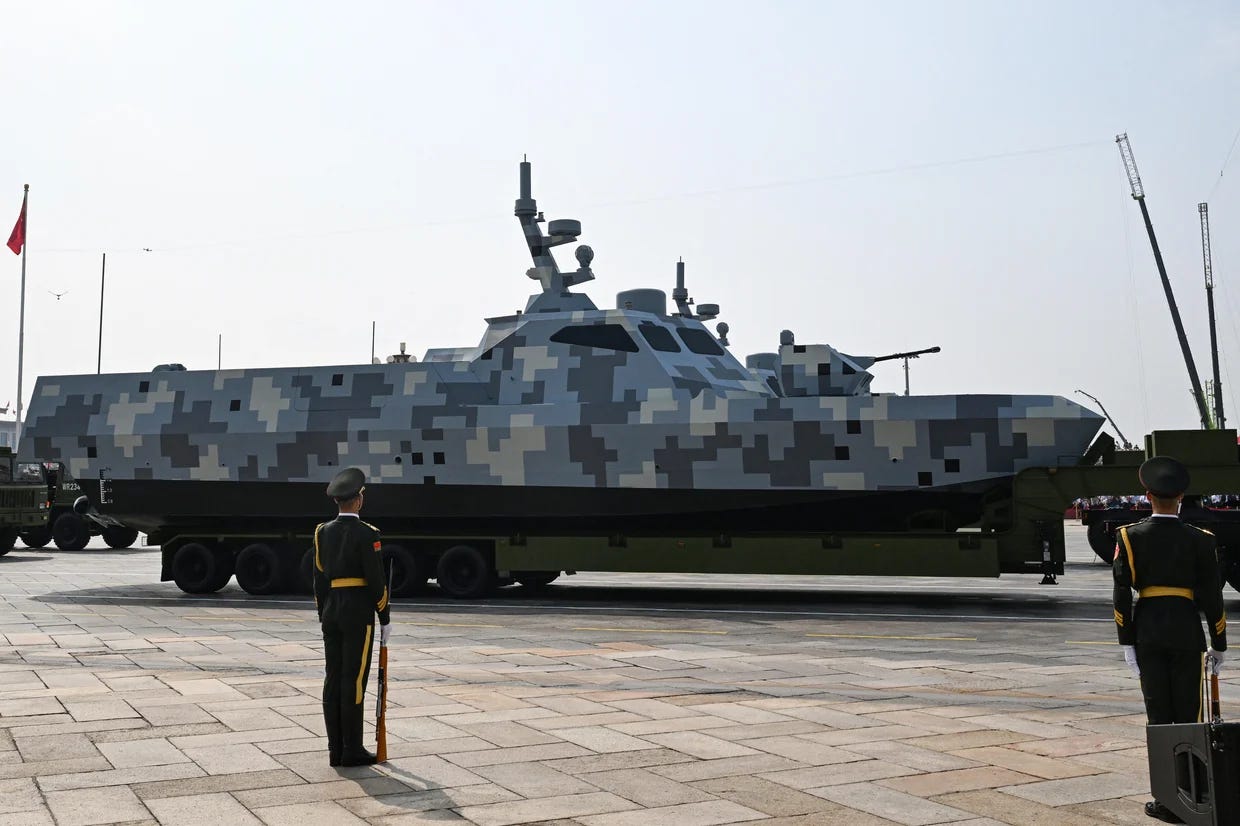
— — —
Microessay By Vidisha
Data By Bhupesh
Edited By Aurko
Produced by Decypher Team in New Delhi, India


